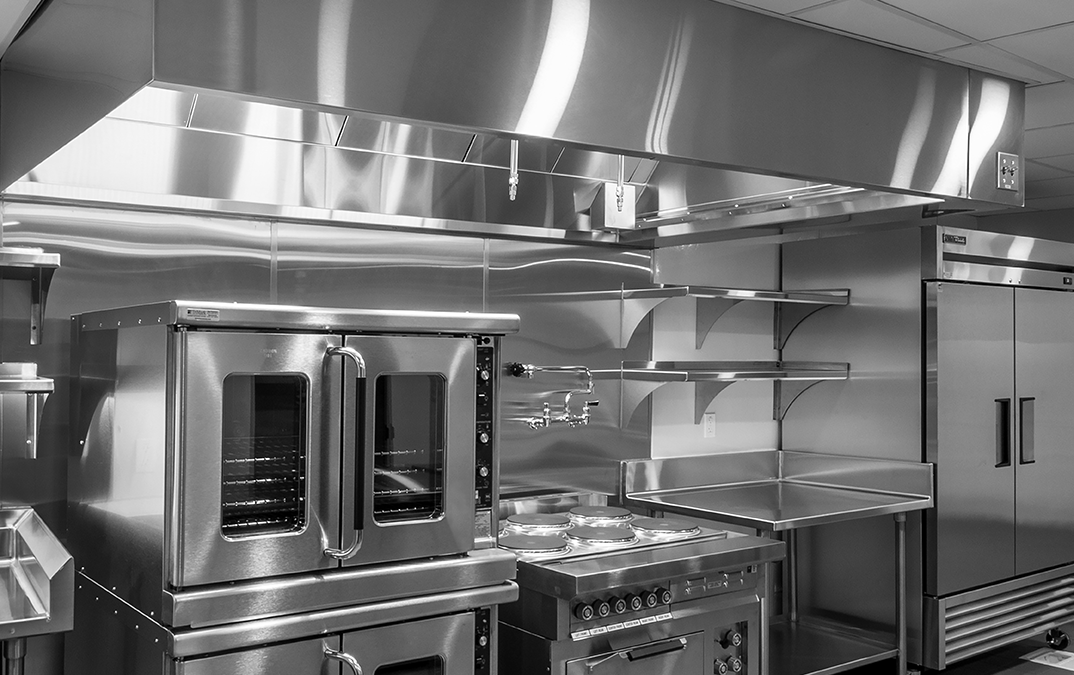An Article by Philip F. Parisi Jr.
If cleanliness is next to godliness some kitchen hoods will have a challenge making it up to “kitchen heaven” and the same can be said for the fire suppression systems supporting them unless they are properly maintained and cleaned.
Kitchen exhaust systems operate under challenging environments and to operate properly they need to be clean. NFPA 96 – Standard for Ventilation and Fire Protection of Commercial Cooking Operations provides requirements for cleaning various types of exhaust systems.
The frequency of inspections to determine the requirements for cleaning is a function of the type and volume of cooking. The use of solid fuel for high-volume cooking will result in a higher inspection rate than when using gas or propane for low-volume cooking. The volume of grease in the kitchen exhaust system can affect the operation of the fire suppression system used to protect hoods.
There are several types of systems that can be used for fire suppression for kitchen hoods: carbon dioxide, foam-water, dry chemical, and wet chemical. Wet chemical systems must comply with NFPA 17A – Standard for Wet Chemical Systems and are the most prevalent due to their simplicity and robustness when compared to carbon dioxide and foam-water. They are comprised of the following components: an agent tank, releasing mechanism, actuator, discharge nozzles, distribution hose, and pull station. Do not forget to include the solenoid interlock with the natural gas or supply to the kitchen equipment.
The wet chemical agent is specifically designed for grease fires and is stored in pre-engineered tanks located in enclosures that also house the release mechanism and actuators. The releasing mechanism typically utilizes a fusible link as the detection system. The actuator provides expellant gas to propel the agent which is discharged through the distribution hose and piping to nozzles located within the hoods they are protecting. Nozzles are provided with rubber or metal caps to keep the nozzles clean. These caps are blown off during agent discharge which results when either the releasing link is fused, or the manual pull station is operated.
Suppression systems of this type must be tested and approved as an assembly and listed accordingly. Utilizing components from different manufacturers to assemble or repair a system will result in a non-compliant system. These extinguishing systems are required to be connected to the building’s fire alarm system and should be inspected semiannually.
An excessive build-up of grease in a kitchen exhaust system can result in a build-up of grease on the nozzle caps which could delay or obstruct their operation and can also result in an increased potential for a grease fire on cooking surfaces and cooking appliances during normal operation.
Having challenges maintaining compliance at your commercial cooking operation?
Let us know in the comments below or reach out directly to RAEL Fire Protection for more help.
About Me:
I’m Philip F. Parisi Jr., P.E., LEED AP, and an Associate Principal at MG Engineering DPC. As part of RAEL’s partnership with MGE, I’ll be providing information each month to help property and risk managers stay-up to-date on the changing requirements of local and national fire protection codes. I have over 20 years of experience in the field developing standards, specifications and plumbing/fire protection system design for various projects including academic buildings, healthcare facilities as well as high-rise residential and commercial buildings.


Recent Comments